
Lot 549
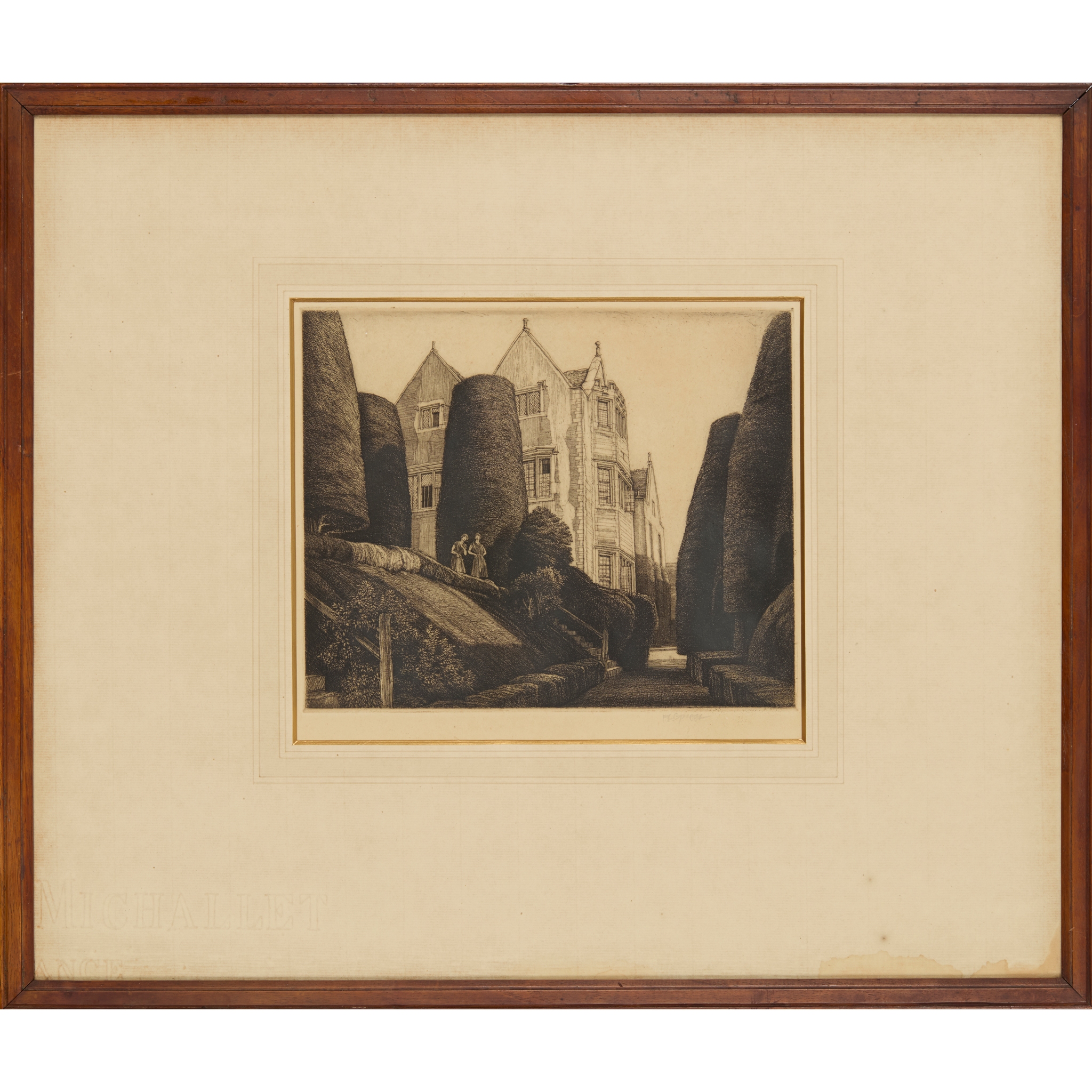
FREDERICK LANDSEER MAUR GRIGGS (1876-1938)
OWLPEN MANOR, 1930
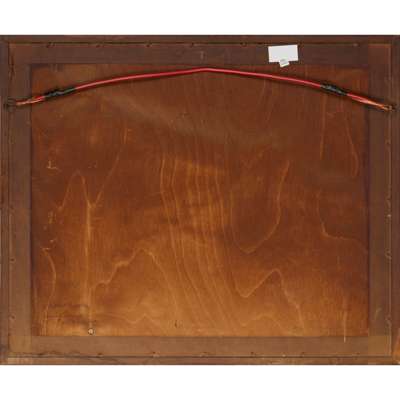
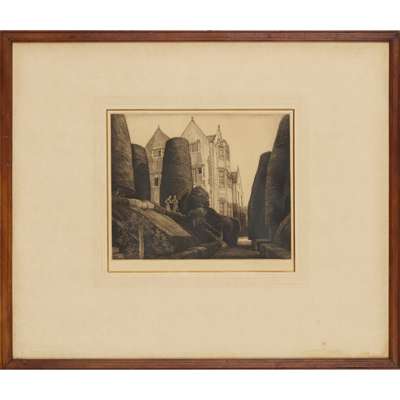


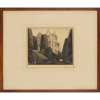
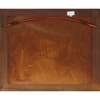
Auction: Day Two inc FL Griggs : A Cotswold Legacy | Lots 334 to 654 | Thursday 16th October from 10am
Description
Etching, signed in pencil lower right F.L. GRIGGS, initialled and dated in the plate F.L.G./ 1930, inscribed by the artist verso OWLPEN MANOR/ORIGINAL ETCHING/ BY F.L. GRIGGS R.A., further inscribed to the reverse PROPERTY OF H.T. HORSFIELD
Dimensions
19cm x 23.5cm (frame size 44.5cm x 52.5xm)
Provenance
F.L. Griggs, and by family descent, see lot 549 for more details
Footnote
To explore the life and work of F. L. Griggs is to step into the Cotswold Arts and Crafts Movement of the early 20th century and be immersed in a community of creative innovation that maintained a deep romanticism and respect for the past.
Griggs’s upbringing instilled in him lifelong loves of both art and the English countryside. Born in Hitchin in 1876, Griggs described an idyllic childhood of ‘golden days’ in which his mother and teachers encouraged him to develop his obvious talent. Aged 21 he trained for two years under architect and draughtsman Charles Edward Mallows and it is to this formative experience that his crisp rendering of buildings owes a debt.
Griggs’s first significant commission was to provide illustrations for the ‘Highways and Byways’ series, a topographical guide to Britain by region. Whilst often overlooked, this work ‘infused with poetic sense’ later informed the etchings for which he is so celebrated. In 1903 when illustrating ‘Oxford and the Cotswolds’ Griggs first visited Chipping Campden and having fallen in love with the town, in October 1904 he settled there permanently. In 1905 he moved to Dover’s House on Campden High Street and lived there until 1930. Griggs was driven to preserve all that was good in Campden. In 1926 Dover’s Hill, which overlooked the whole of Campden from the West, was put up for sale. Griggs and the historian G. M. Trevelyan bought Dover’s Hill for £4000, saving it from hotel development. In 1929 they presented it to the National Trust.
It was in Chipping Campden that Griggs flourished, both personally and professionally. In 1912 he became a Catholic, solidifying his longtime spiritual convictions and adopting his baptismal name ‘Maur’. Secondly in 1922 he married Nina Muir, his love for whom Griggs exalted as ‘Too great a gift’. During this period, he rediscovered working in the medium of etching, as, despite having produced sixteen etchings from 1896 to 1903, he was later so unimpressed with his efforts that he destroyed any examples he encountered. As art historian Raymond Lister asserts, there is no doubt that his later etchings showcase ‘complete mastery both of technique and of composition, each of which had been only partially mastered before’. Depicting both real-world and imagined scenes, at the heart of his work sits a deep spirituality and an idealisation of Gothic and Medieval England.
Parallel to these significant life events were artistic and professional connections set to define Griggs and his oeuvre. At the start of the twentieth century Chipping Campden was a bustling hub of the Arts and Crafts Movement and therefore Griggs’s move to the town facilitated him meeting key individuals who became his closest friends and confidants, including Paul Woodroffe, a stained-glass designer and fellow Catholic who had been living there from 1904. Charles Ashbee’s Guild of Handicraft workshops had recently relocated to Chipping Campden in 1902. Cotswold School architects and furniture designers Ernest Gimson, Ernest and Sidney Barnsley were all working in the South Cotswolds. Griggs worked with Gimson from 1917 until his death in 1919, collaborating on several projects that remained unbuilt, including the Stonyhurst War Memorial. Nina Griggs later described Gimson as being someone for whom Griggs ‘had great affection and respect’, indeed in Griggs’s home, ‘everything was Gimson or Barnsley’.
The genuine closeness and meeting of minds amongst the Cotswold School designers can be glimpsed best in correspondence from the 1980s between Nina Griggs and Max Burrough, an early researcher and writer on Gimson and the Barnsleys. Nina recalls how following Gimson’s death they visited Emily Gimson ‘whenever we could’, often for extended periods. She further recollects her husband staying with Norman Jewson and his wife Mary, Ernest Barnsley’s daughter. Norman Jewson, like Griggs, had an architectural background and was an eager apostle of Gimson and Barnsley. Moreover, they had a shared passion in the Society for the Protection of Ancient Buildings, of which they were both members. Indeed, Griggs’s famous etching ‘Owlpen Manor’ depicts the house Jewson purchased in 1925 and restored, rescuing it from a tumbledown fate. He had to sell it the following year, having rescued it out of sheer generosity. In his dedication Griggs praises how his friend ‘saved this ancient house from ruin’, perhaps not unlike what Griggs was to do with the derelict barn which was to become New Dover’s House.
Griggs also befriended ceramicists Alfred and Louise Powell and the woodcarver William Simmonds and his wife Eve who had moved to the Cotswolds in 1919 and lived within walking distance of the Gimsons’ house. Nina in her letters to Burrough reminisces of Sunday afternoon strolls ‘down hill through a wood and meadow’ to have tea there, presumably whilst she was staying with Emily Gimson. Most thrilling however were the annual Christmas puppet parties, conducted in the barn which also served as William’s workshop. Nina gleefully remembers being ‘sat on chairs and cushions…all in darkness the curtains parted’ the performances revealing ‘a magic world of make believe come true.’
Griggs was an incredibly convivial and engaged member of the community, as one of his daughters Barbara later recalled: ‘nothing delighted him more than a gathering of his friends…for talk and laughter and boisterous fun’, as well as ‘local cricket matches, tennis parties…evenings of music at Dover’s House’. So various were his interests and busy his schedule, that when someone suggested he do less he enthusiastically answered ‘I can’t help it. I must plan my life as though it would last for ever’.
His was not a life confined to this Cotswold halcyon existence however, being elected to the Council of the Royal Society of Painter-Etchers and of the Society of Graphic Fine Art. He exhibited his etchings first at the Twenty-One Gallery in London from 1912 to 1920 before transferring to publishing through Colnaghi, with whom he remained for the rest of his life. The first decade of the Colnaghi affiliation constituted the pinnacle of Griggs’s career, as his popularity and sales soared; etchings ‘Sarras’, ‘Potters’ Bow’, and ‘Castor’ all hail from this period.
In 1931 he was one of the first etchers to be elected to full membership of the Royal Academy. Following bouts of ill-health over the last few years of his life Griggs died on 7th June 1938.
Literature: Comstock F.A. A Gothic Vision: F. L. Griggs and His Work. Massachusetts: Boston Public Library, 1966, no. 46, iii/iii
Northrop Moore J. F.L. Griggs,1876-1938: The Architecture of Dreams, Oxford University Press 2000, p. 141
Griggs’s depiction of Owlpen Manor in Gloucestershire is one of his most striking images. The house was purchased in 1925 by his friend the architect Norman Jewson, who subsequently undertook a sensitive restoration of the property. Originally built in 1515, the house is notable for having sheltered Queen Margaret during her flight from the Battle of Tewkesbury. Griggs, quoting Tennyson, described the manor as a “haunt of ancient peace,” and in a letter of November 1924 remarked: “I have dreamt of it, and of a rendering that might capture some of that wonderful wistfulness and beauty.”
Nina Griggs's sister Lily was married to Harry Horsfield and they lived at Broad Campden. Nina met F.L. Griggs through this relationship.





